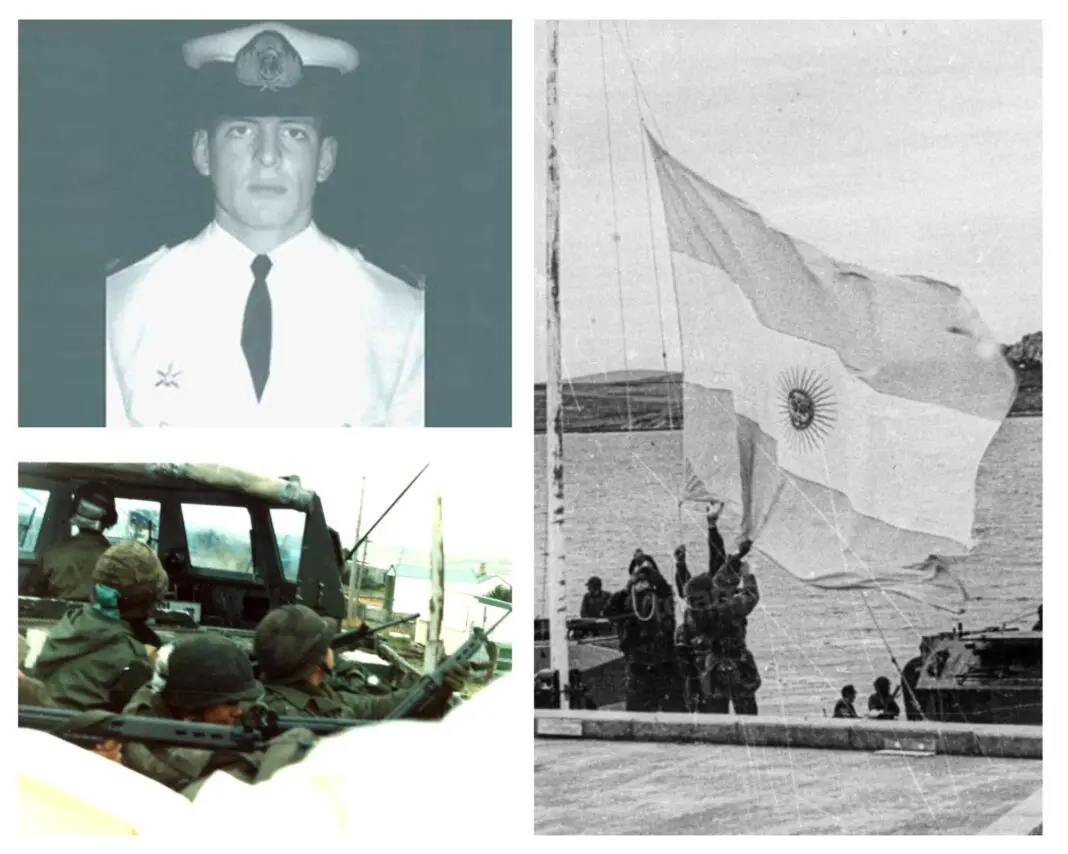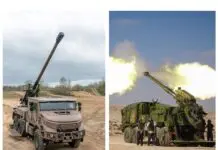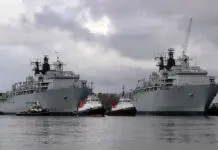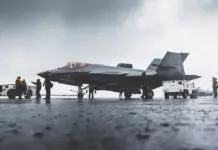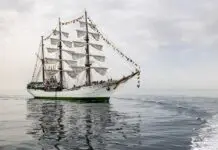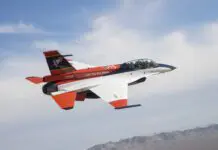As every year, April 2nd represents a highly emotional date for Argentina, as it not only marks a new anniversary of the recovery of the Malvinas Islands but also commemorates the Day of the Veteran and the Fallen in the Malvinas War.

In different parts of the country, vigils starting in the last hours of April 1st gather Malvinas War Veterans, personnel from the Armed Forces, families, and citizens to pay tribute to the 649 fallen during the conflict for the South Atlantic islands. It is worth noting that the commemoration of April 2nd as the Day of the Veteran and the Fallen in the Malvinas War was established by Law 25,370 in the year 2000 (amended by Law 26,110 in 2006), also declaring it a national holiday.
Beginning of the Recovery: Landing of the Amphibious Commandos and Tactical Divers
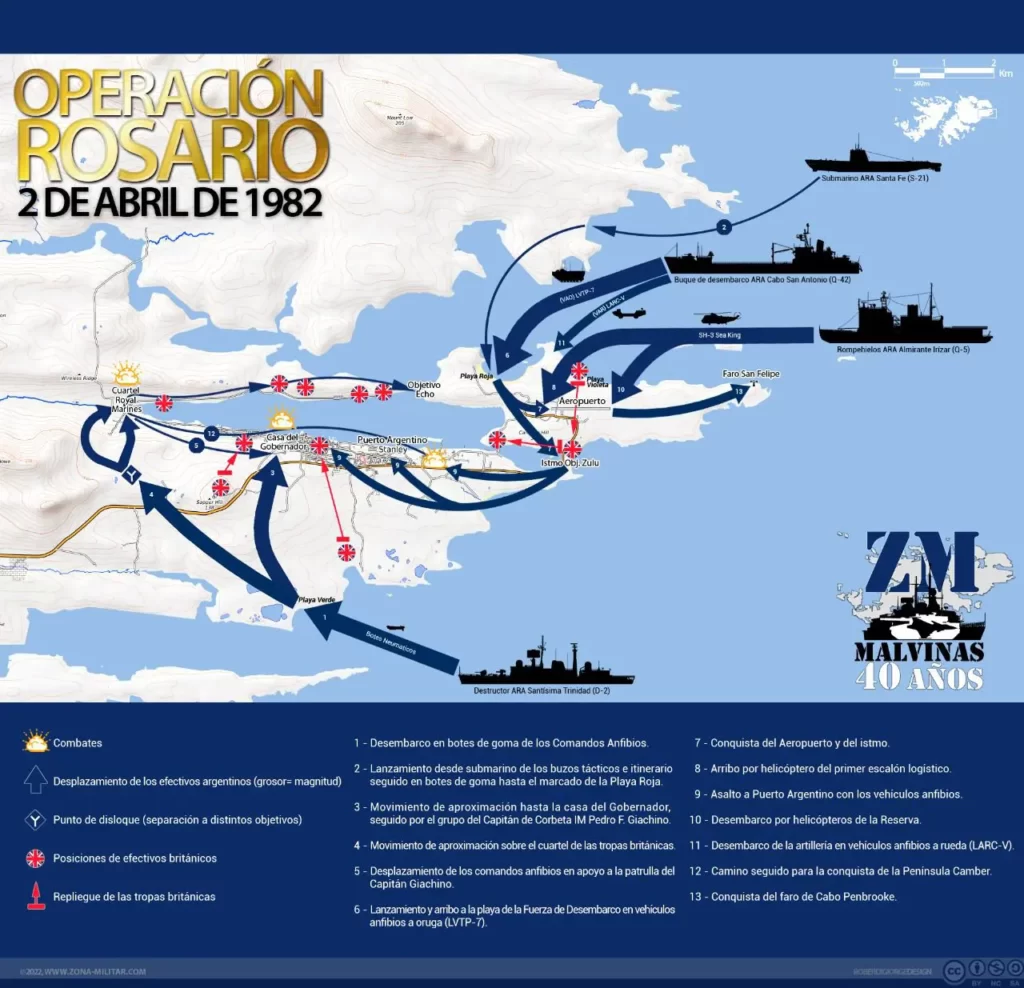
The first Argentine forces to set foot on the Malvinas soil were members of the Amphibious Commandos Group of the Marine Corps and the Tactical Divers Group of the Navy. At approximately 9:30 PM, the destroyer ARA Santísima Trinidad anchored 1 mile south of the coast of Soledad Island. From that position, the Argentine special operations troops deployed 21 Zodiac boats to their designated location.
This initial element, consisting of 92 personnel, was commanded by Corvette Captain Guillermo Sánchez Sabarots, reaching the coast at 11:45 PM near Lake Point beach.

Once on land, Amphibious Commandos and Tactical Divers divided into two sub-elements: The first group, led by Corvette Captain Pedro Edgardo Giachino, aimed to capture the governor’s house. The second group, led by Corvette Captain Guillermo Sánchez Sabarots, would attack the Royal Marines barracks at Moody Brook.
At 01:55 on April 2nd, the submarine ARA Santa Fe surfaced to deploy a group of tactical divers whose mission was to place radio navigation beacons to guide the imminent amphibious landing, and then occupy the Cape San Felipe lighthouse. The landing of these troops took place at 03:00.
Amphibious operations begin
At approximately 04:20 AM, Argentine Navy surface units began to take positions to carry out amphibious landing operations and support these units.
Meanwhile, aboard the BDT ARA Cabo San Antonio, the amphibious vehicles of the 2nd Marine Infantry Battalion, under the command of Frigate Captain IM Alfredo Raul Weinstabl, were preparing. This unit was joined by a section from the 25th Infantry Regiment of the Argentine Army, led by Sub-Lieutenant Roberto Reyes.

At 05:30, the first group of Amphibious Commandos reached their objective at Arroyo Caprichoso. Corvette Captain Sánchez Sabarots expressed:
“It was still completely dark. We were going to use tear gas grenades to force the British out of the buildings and then capture them. Our orders were not to cause casualties if possible. This was the most difficult mission of my career. All our training as Commandos had been aimed at fighting aggressively and causing the enemy maximum casualties. We surrounded the barracks with machine gun teams, leaving only one escape route along the peninsula to the north of Stanley Bay, so that those who managed to escape could not head to the city and reinforce the British there in position. We threw tear gas grenades into each of the buildings. There was no reaction, the barracks were empty.”
Simultaneously, the actions of Argentine forces were also unfolding around the governor’s house.
After 06:20, the Foxtrot Section, composed of four landing craft, touched the cold waters of the South Atlantic destined for the beaches of York Bay. At approximately 06:30, the vehicles landed and began the march towards the Puerto Argentino airport to secure the position, a task assigned to Company C of the 25th Infantry Regiment. Reports detailed that the Royal Marines had abandoned the air station facilities, leaving the runway blocked with various vehicles.
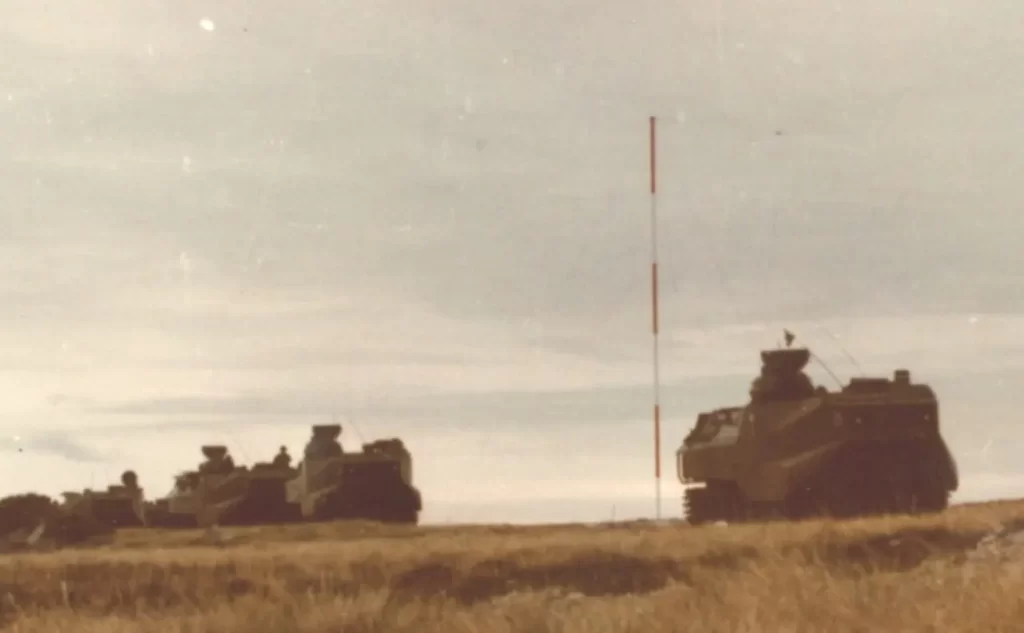
The four leading amphibious vehicles were followed by another sixteen (Echo and Delta Companies), which landed on the beaches without reporting any incidents.
First combats at the governor’s house and en route to Puerto Argentino
At the residence of the British governor, Rex Hunt, despite the surrender ultimatum made by Frigate Lieutenant IM Diego Fernando García Quiroga, the Royal Marines continued to maintain pressure on the “Techo” Patrol, now also with fire from the village. Faced with this situation, Giachino and his men advanced towards the residence, managing to enter a hallway of it, to a room apparently without an exit.
It was at that moment when Captain Giachino received enemy fire, with Lieutenant García Quiroga also falling. In an attempt to assist his Commander, Second Corporal Nurse Ernesto Ismael Urbina was also injured. Unfortunately, assistance to the three wounded would only come with the surrender of the British forces, which had the fatal consequences already known despite the efforts of the medical personnel.
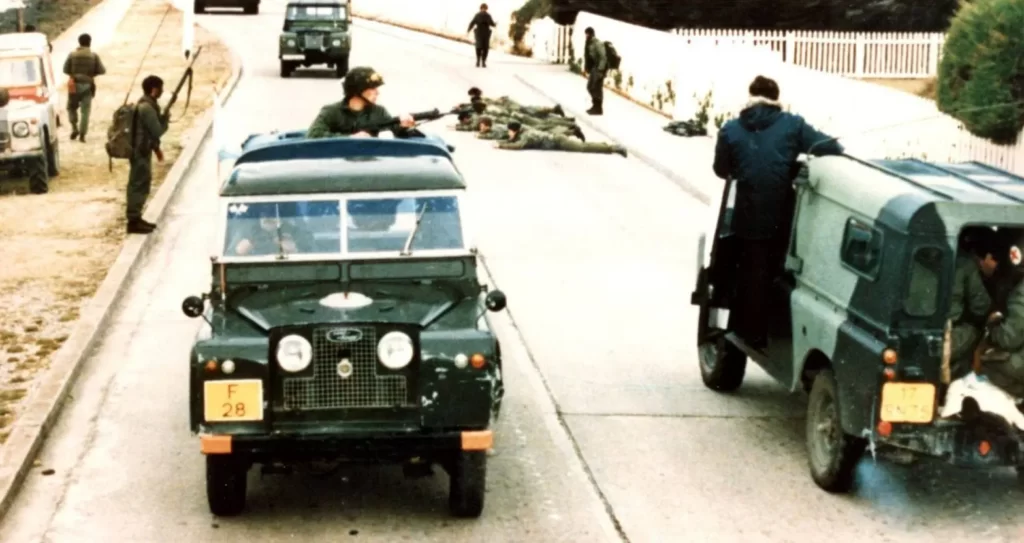
During the advance towards Puerto Argentino, the vanguard composed of three amphibious vehicles (with a total of 71 men from the 2nd MIB) was attacked by the Royal Marines. The response of the Argentine forces was immediate, causing the withdrawal of the British. After repelling the attacks, the vanguard continued its march to establish contact with the Amphibious Commandos tasked with capturing the Arroyo Caprichoso barracks.
Outnumbered and outgunned, British governor Rex Hunt formally surrendered to the Landing Force Commander, Rear Admiral Carlos Alberto Büsser.
The recovery of the Malvinas Islands was successfully carried out, without any casualties among the civilian population and British troops. However, the Malvinas feat claimed its first combat casualty: Corvette Captain I.M. Pedro Edgardo Giachino. He died from wounds received, seeking a bloodless surrender and avoiding casualties to the enemy, thus preventing unnecessary bloodshed. He offered his life in service to the Fatherland and the recovery of the Malvinas Islands.
Finally, the national flag flew over the Malvinas Islands, ending the usurpation of Argentine territory for almost 150 years. With the deed accomplished, Argentine Army personnel began to relieve the Marine Corps in key positions in Puerto Argentino and its surroundings.

At the same time, the Argentine Air Force initiated Operation ARIES 82:
Around 05:00, the C-130H TC-68, callsign “LITRO 1,” took off from the IX Air Brigade. The four-engine aircraft transported over a hundred men. This heterogeneous group was composed of Special Operations Group personnel, Air Transport Control Elements, soldiers from the Argentine Army, personnel from the Air Component of the Theater of Operations, as well as two Army vehicles and material for an Air Cargo Terminal.
The crew of “LITRO 1” consisted of:
Commander: Commodore Carlos Beltramone
1st pilot: Vice Commodore Alfredo Cano
Navigator: Commodore Roberto Mela
Flight Mechanics: Staff Sergeant Juan Rydzik and Chief Airman Mario Cemino
Cargo Assistants: Staff Sergeant Roberto Carabajal, Staff Sergeant Roberto Pajón, and Airman Carlos Salazano.
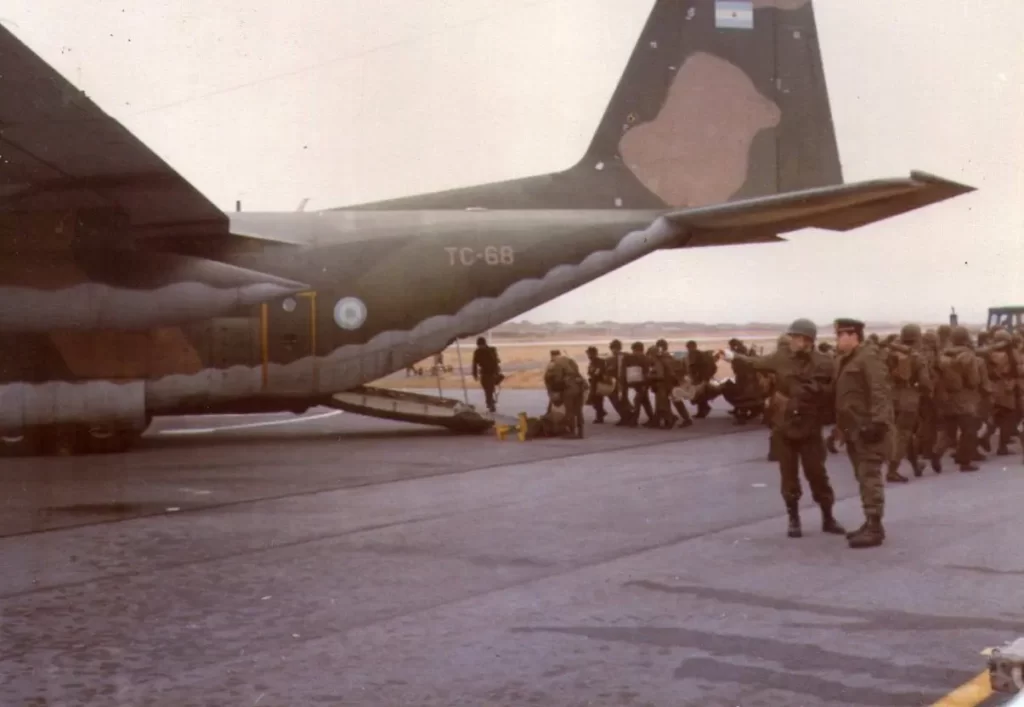
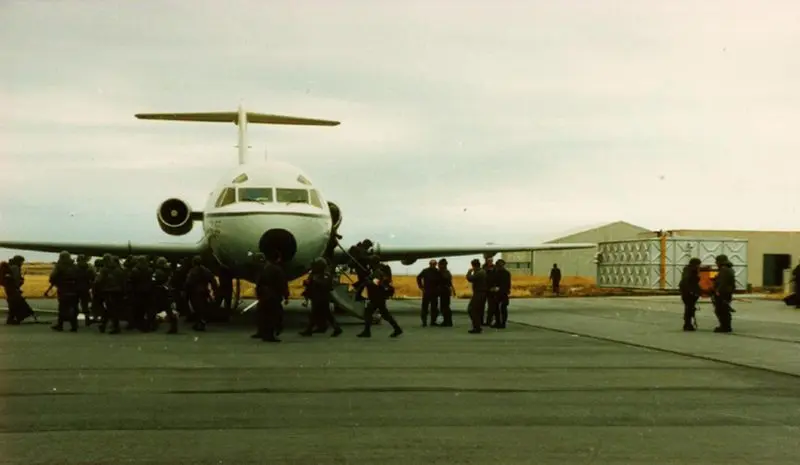
“LITRO 1” landed around 08:30, once the runway was cleared of obstacles and Argentine forces managed to secure the surroundings of the air station. At that moment, air control was exercised from the destroyer ARA “Hércules” D-1. The airlift would continue throughout the day, completing 8 flights between the C-130 Hercules and Fokker F-28.
You may also like: With the Stryker once again as a candidate, the Argentine Army’s IFV project adds new offers


